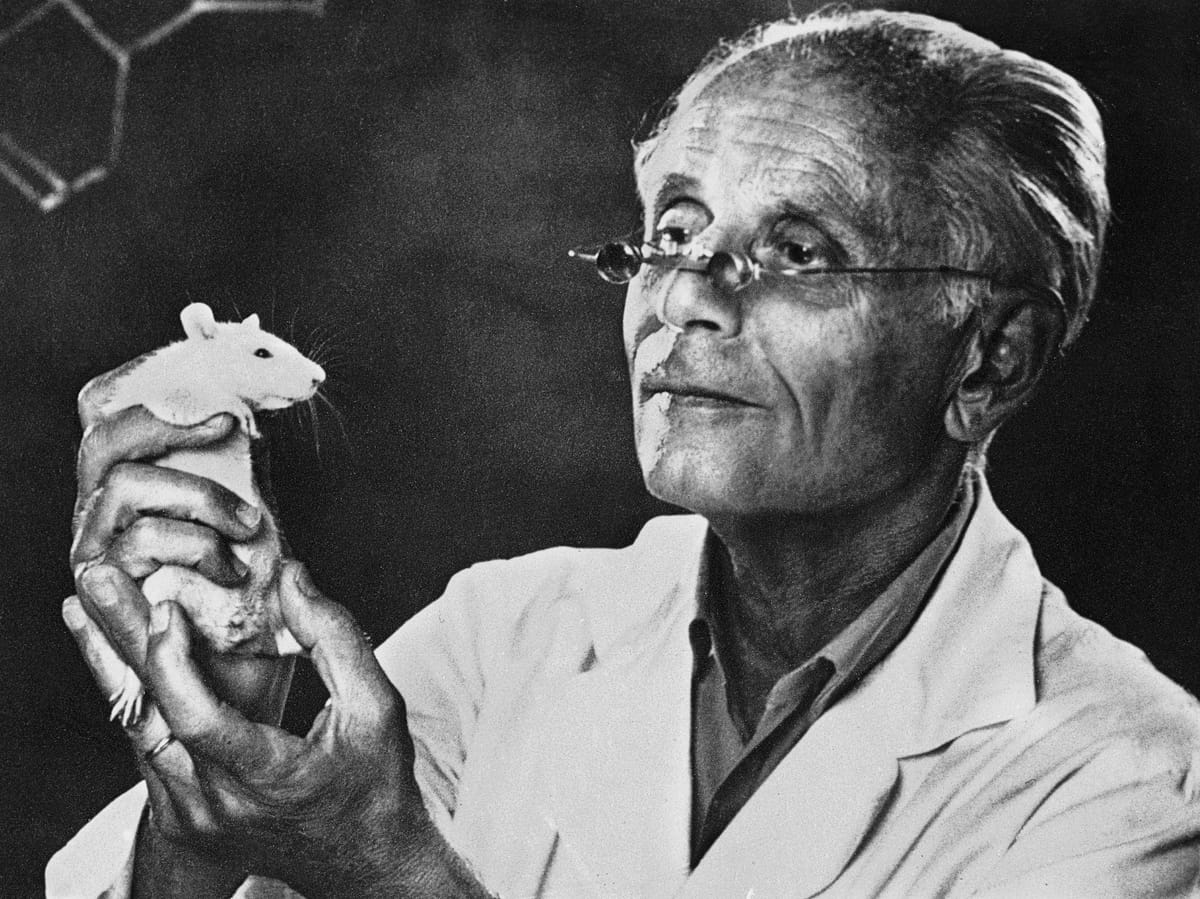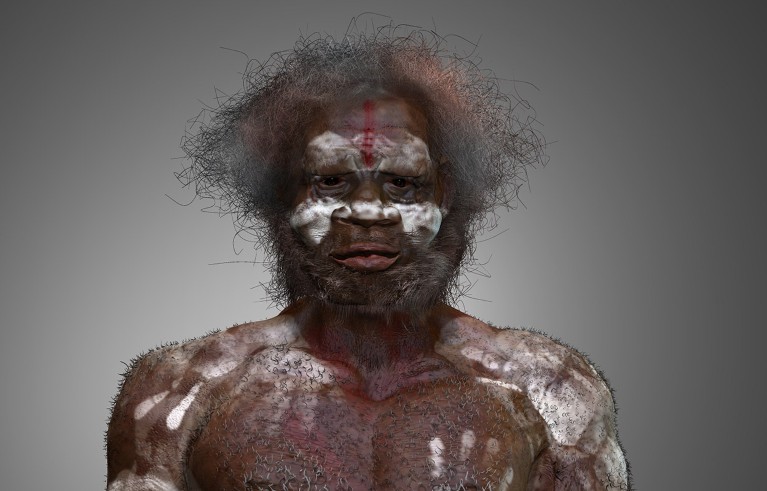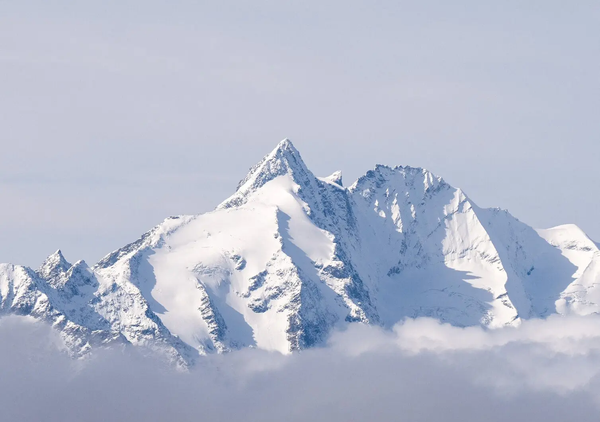The secret history behind the science of stress

From NPR: "The modern idea of stress began on a rooftop in Canada, with a handful of rats freezing in the winter wind. This was 1936 and by that point the owner of the rats, an endocrinologist named Hans Selye, had become expert at making rats suffer for science. He would subject them to extreme temperatures, make them go hungry for long periods, or make them exercise a lot, then kill the rats and look at their organs. What was interesting to Selye was that no matter how different the tortures he devised for the rats were, the physical effects of his different tortures were always the same. There would be changes particularly in the adrenal gland. So Selye began to suggest that subjecting an animal to prolonged stress led to tissue changes and physiological changes with the release of certain hormones, that would then cause disease and ultimately the death of the animal. And so the idea of stress as a medical problem was born."
Two women and their Sherpa guides die while trying to summit Shishapangma

From Outside: "The accidents made international news: two American women and their Sherpas had perished in a pair of avalanches on Shishapangma, an 8,027-meter peak in Tibet. The climbers, it was reported, had been racing to become the first American woman to scale all 14 of the world’s 8,000-meter peaks, a feat widely popularized by 40-year-old Nepali mountaineer Nirmal “Nims” Purja, who in 2019 proved that the mountains—all of them located in the Himalayan and Karakoram ranges of South Asia—could be climbed in just months. Purja himself had been on the mountain that day; Anna Gutu was a client of his climbing company, Elite Exped, and had been led by one of its Sherpas, 27-year-old Mingmar Sherpa. Gina Rzucidlo, 45, had been led by a 35-year-old Sherpa named Tenjen “Lama” Sherpa, who earlier that year guided Norway’s Kristin Harila, a former professional skier, in a successful attempt to beat Purja’s record. Both Mingmar and Tenjen died roped to their clients."
The rogue dentist who claims his swallowing techniques can reshape people's faces

From the Paris Review: "I met Dr. Mike Mew at the house next door to Jake’s. This house had been a house, but now it was a dentist. It was called the Smile Centre. Outside was a laminate board that said so, accompanied by a fading photo of a perfect and disembodied grin. Mike Mew is the head of the closest thing dentistry has to a cult. Mike and his father, John, believe that in humanity there is currently an epidemic of ugliness. They promise that you can build yourself a new and strong and masculine jawline, basically just by swallowing different. They call this mewing. He has obtained adoration on both 4chan and TikTok. Mewing is a big thing, a real phenomenon. Mike Mew also has, at time of writing, an ongoing misconduct hearing for, among other things, making a six-year-old boy wear head, neck, and inside-mouth appliances that allegedly led to the child being in so much pain he had “seizure-like episodes.” I was Mike Mew’s patient from ages nine to fifteen, or thereabouts. This all started in 2005."
(Editor's note: If you like this newsletter, please share it with someone else. And if you really like it, perhaps you could subscribe, or contribute something via my Patreon. Thanks for being a reader!)
How the rise of the camera launched a fight to protect personal privacy in the 1900s
:focal(512x380:513x381)/https://tf-cmsv2-smithsonianmag-media.s3.amazonaws.com/filer_public/f2/82/f2822079-c144-4c0e-9b0c-d3585995cad6/service-pnp-ggbain-04000-04049v.jpg)
From the Smithsonian: "In 1904, a widow named Elizabeth Peck had her portrait taken at a studio in a small Iowa town. The photographer sold the negatives to Duffy’s Pure Malt Whiskey, a company that avoided liquor taxes for years by falsely advertising its product as medicinal. Duffy’s ads claimed the fantastical: that it cured everything from influenza to consumption, that it was endorsed by clergymen, that it could help you live until the age of 106. The portrait of Peck ended up in one of these dubious ads, published in newspapers across the country alongside what appeared to be her unqualified praise: “After years of constant use of your Pure Malt Whiskey, both by myself and as given to patients in my capacity as nurse, I have no hesitation in recommending it.” Duffy’s lies were numerous. Peck (misleadingly identified as “Mrs. A. Schuman”) was not a nurse, and she had not spent years constantly slinging back malt beverages. In fact, she fully abstained from alcohol. Peck never consented to the ad."
The Smithsonian bird detectives who try to save lives lost due to plane accidents

From The Washingtonian: "Carla Dove recalls when the lines on her telephone “started lighting up like Christmas trees.” As the world would later learn, a flock of birds had flown into the engines of a US Airways flight taking off from LaGuardia Airport, causing them to lose power. Captain Chesley “Sully” Sullenberger and his copilot, Jeffrey Skiles, skillfully glided the Airbus A320 to a hard landing in the Hudson River. Dove’s work was just beginning. A forensic ornithologist, she heads the Smithsonian Institution’s Feather Identification Lab, an elite, five-person unit that’s the only full-time bird-strike identification lab in the world. (Yes, her surname is Dove. Yes, she studies birds. Yes, she has already heard the joke.) Whenever birds collide with civilian or military aircraft so violently that what remains of the winged creatures is beyond recognition, Dove’s lab gets a call. The leftover gunk—feather residue, broken beaks, gut matter—is collected, then mailed to Washington. “It’s not a very glamorous job,” Dove says.
How this race of ancient humans managed to live on top of the world

From Nature: "When life got tough, the Denisovans got tougher. These enigmatic ancient humans hunted birds, rodents, even hyenas, helping them to thrive high on the Tibetan plateau for well over 100,000 years. Those conclusions emerge from a study of thousands of mostly tiny animal bones that provide an insight into life at Baishiya Karst Cave in China — only the second archaeological site known to host Denisovans, after the Siberian cave that gave the group its name. Denisovans are a sister group to Neanderthals, and might have once lived across Asia. Many of the cave remains could be identified only by their protein signatures. This included a rib bone that represents a new Denisovan individual, one of just a handful known. ““It’s at high altitude. It’s cold. It’s not a nice place to be," said Frido Welker, an archaeological scientist who co-led the study."
A demonstration of the lightness illusion
a demo of lightness illusion pic.twitter.com/Sfn9F49JIw
— Akiyoshi Kitaoka (@AkiyoshiKitaoka) June 19, 2024
Acknowledgements: I find a lot of these links myself, but I also get some from other newsletters that I rely on as "serendipity engines," such as The Morning News from Rosecrans Baldwin and Andrew Womack, Jodi Ettenberg's Curious About Everything, Dan Lewis's Now I Know, Robert Cottrell and Caroline Crampton's The Browser, Clive Thompson's Linkfest, Noah Brier and Colin Nagy's Why Is This Interesting, Maria Popova's The Marginalian, Sheehan Quirke AKA The Cultural Tutor, the Smithsonian magazine, and JSTOR Daily. If you come across something interesting that you think should be included here, please feel free to email me at mathew @ mathewingram dot com



